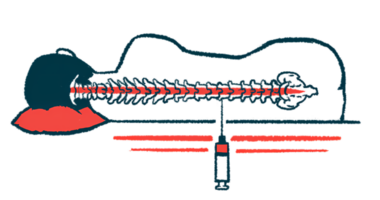Lesser Right-hand Dominance May Be Linked to More Severe MS

Inconsistently switching between hands for most common manual activities — or naturally choosing the left rather than the right hand — may be associated with more severe multiple sclerosis (MS), either in the form of younger age at diagnosis or progressive type, particularly in women, a small study suggests.
These findings add to a previous U.S. study in female nurses reporting that left-handed women had a higher risk of more severe MS than those who were right-handed, and warrant further studies into this potential association.
Data were presented by Melissa Villafana, with the Montclair State University, at the 2021 Consortium of Multiple Sclerosis Centers (CMSC) Annual Meeting held virtually in Orlando, Florida, Oct. 25–28.
The oral presentation was titled “Non-Right-Handedness May Be Associated With More Severe Multiple Sclerosis.”
About 11% of the general population is left-handed. The relationship between left-handedness and autoimmune diseases, such as MS, has been under debate with some contradicting evidence.
A 2009 study of 120,000 female U.S. nurses reported a 62% increased risk of MS among women who were naturally left-handed relative to those who were naturally right-handed. Meanwhile, a 2019 study involving nearly 8,900 MS patients from the U.S. and Europe found no association between handedness and age of MS onset, MS type, or disability.
Notably, “there is now more evidence that the direction of hand preference (left-handed versus right-handed) is less important in examination of behavioral and neuroanatomical measures than is degree of handedness — better known as consistent- versus inconsistent-handedness,” Villafana said.
Consistent, or strong, handedness can be defined as using the dominant hand for most common manual activities, and inconsistent, or mixed, handedness as using the non-dominant hand for at least one common manual activity.
“In order to determine the relationship between MS and handedness, clearly defined determination of hand preference, and measures of both handedness direction [hand preference] and degree, should be included,” Villafana added.
To address this, Villafana and colleagues at Montclair State University and at the Kessler Foundation’s Rocco Ortenzio Neuroimaging Center conducted an online survey to assess demographic and clinical data, as well as the direction and level of handedness, of MS patients.
Participants were recruited through social media from November 2019 to May 2020. A total of 138 patients (116 women and 22 men), diagnosed with either primary progressive MS (PPMS) or relapsing-remitting disease (RRMS), completed the survey and were included in the analysis.
The handedness questionnaire used a scale to assess three parameters: writing hand, left vs. right hand preference, and degree of handedness.
The first parameter was evaluated through answers to the simple question “Which hand do you write with?” People giving any answer other than ‘always right’ were considered left-handed.
The direction and degree of handedness were assessed with a scale ranging from –100 (perfectly consistently left-handed) to +100 (perfectly consistently right-handed). Respondents with scores at and below 0 were classified as left-handed, while those with scores above zero were classified as right-handed.
In terms of degree, patients with scores of +80 or higher were considered consistently right-handed, those with scores of –80 or lower were consistently left-handed, and those with scores between –75 and +75 were classified as inconsistently-handed.
Results showed that patient’s writing hand, as well as their hand preference (left vs. right), were not significantly associated with age, gender, age at diagnosis, or MS-related disability.
However, inconsistently-handed patients were diagnosed at a significantly younger age compared with those classified as consistently right handed (mean of 34.7 vs. 38.8 years).
In addition, a significantly greater proportion of left-handed women (two out of 11; 18%) had a PPMS diagnosis relative to right-handed women (two out of 105; 1.9%).
No other significant associations were detected.
These findings suggest that “non-right handedness, no matter how measured, may be associated with increased MS severity, either in the form of earlier diagnosis or in MS typology,” especially in women, Villafana said.
Overall, the data suggest that gender effects “may interact with MS likelihood and severity as a function of handedness,” the researchers wrote. Thus, “future research should directly examine this possibility,” Villafana said.







